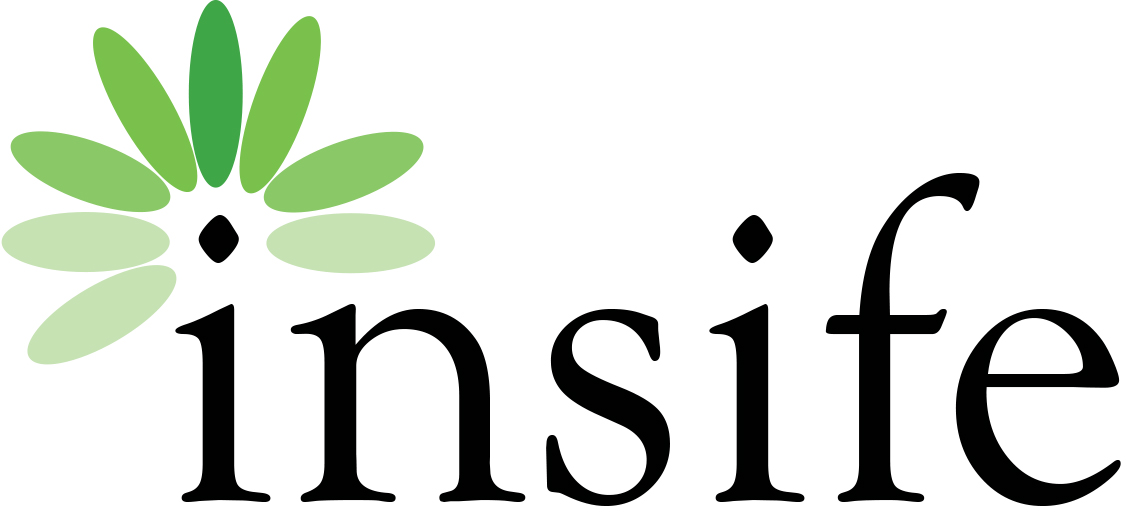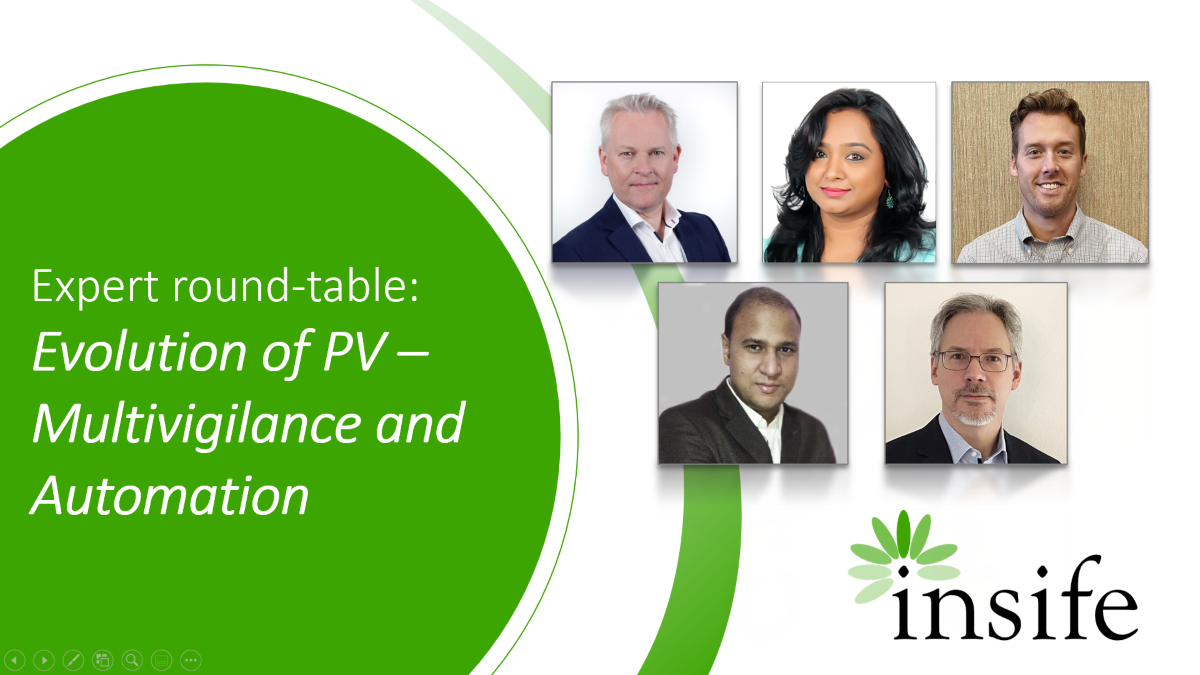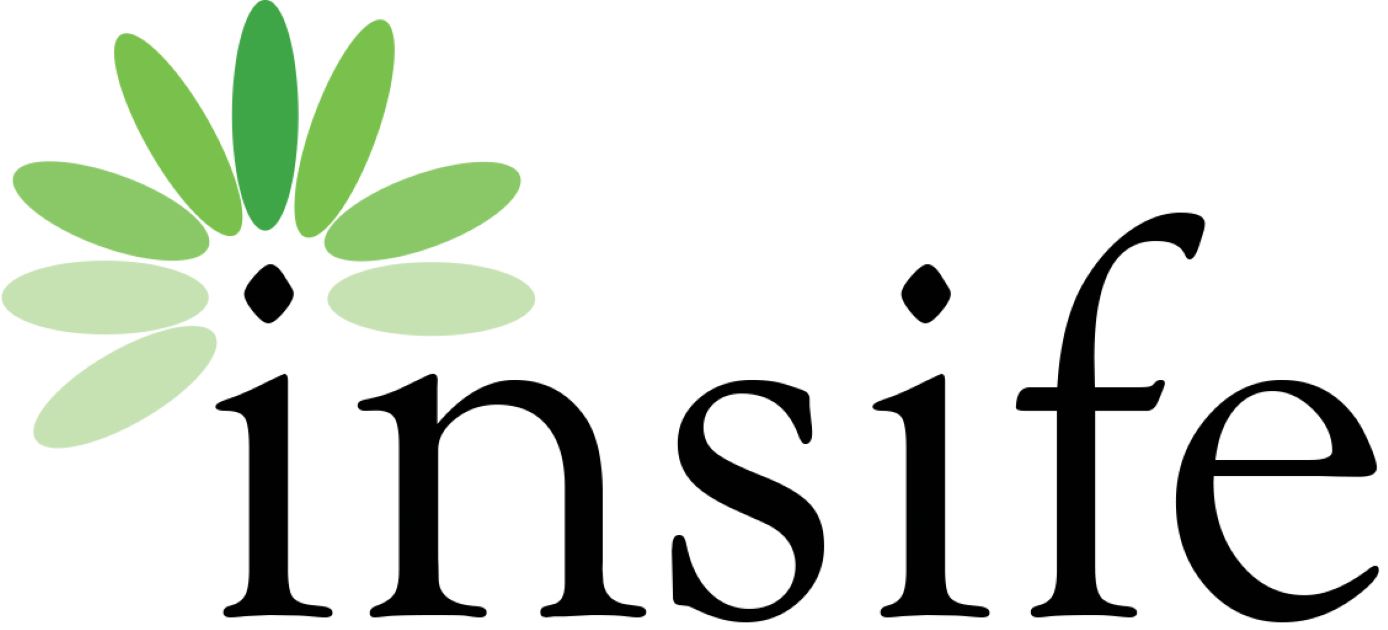By Insife
Expert round-table: Evolution of PV – Multivigilance and Automation
Hellerup, Denmark: Pharmacovigilance (PV) technology and consulting leader Insife has developed platforms to meet the emerging industry need for Multivigilance (MV) leveraging advanced technologies, such as artificial intelligence and machine learning, to get ahead of huge increases in data volumes and complexity.
‘Multivigilance’ describes a much wider scope of oversight activities related to pharmacovigilance that include device vigilance, vaccine vigilance, hemovigilance, defective products, e-cigarettes, counterfeits, complaints, etc.
PV evolution
Pharmaceutical-Networking recently brought together five of Insife’s leading experts from around the world to discuss the evolving nature of pharmacovigilance demands, highlighting the urgency of transitioning from a PV-only to a ‘Multivigilance’ approach. They focused on the potential of Insife’s HALOPV software platform to allow drug companies to orchestrate all their global PV and MV activities, automating routine tasks and speeding data flows and communications.
From Denmark, Insife’s CEO and PV process expert Martin Holm-Petersen started by reflecting that while the basic purpose of pharmacovigilance remained rooted in ensuring patient safety by maintaining an overview of drugs on the market and on clinical trials, it also needed to evolve to reflect the increasing volume and scope of work for many organizations’ PV departments.
“I would say that PV’s basic mechanism remains largely unchanged over the past decades – based on filing individual case safety reports – or adverse drug reactions (ADRs). And so, while ADR reports might be increasingly in a digital formats, the basic discipline of manual form filling remains. There is certainly potential to apply AI and Big Data technologies to revolutionize these procedures but that’s not part of the current core industry disciplines. It needs a big leap to bring all that truly into the digital era” Mr. Holm-Petersen reflected.
Praveen Gupta, Insife’s India-based IT Business & Digital Transformation Technology Leader, noted that pharma companies were facing ever more intense pressures in maintaining rigorous PV.
“There have been a lot of challenges around system implementation and awareness with issues of under-reporting of ADRs, with considerable uncertainty about what’s being reported and indeed what ADR actually means in some cases. This can stem from both anxiety over reporting and also confusion – distinguishing ADRs from other conditions, for instance,” said Mr. Gupta.
Advanced automation and AI to the rescue
Marc Zittartz, Insife’s German-based Principal Consultant and Subject Matter Expert (SME) in PV, explained that organizational challenges did indeed have potential technological solutions.
“We need to decide what is relevant and also accept that it is dependent. The longer a drug is on the market, the more data on it exists and more we can automate them. With new drugs or devices, it is of course are more difficult because of paucity of data. But then most innovations are developments of something else, so then it also becomes a question of deciding how much knowledge you can safely transfer from one drug or device to another. When it is something completely new then we need to look at the potential for applying Artificial Intelligence (AI),” said Mr. Zittartz.
Complicating the picture further is the increased complexity of handling devices and device incidents under FDA combination product rules as well as the EU Medical Device Regulation (MDR).
AI and Machine Learning provide the most promising approaches to coping with complexity, as well as the ‘white noise’ data overloads associated with worldwide reporting of single case adverse events, highlighted by the introduction of new vaccines to combat the global novel coronavirus COVID-19 pandemic. Genuinely AI-based technology needs to automate much of the manual effort carried out by healthcare providers, patient bodies, industry, and regulators.
Multivigilance through creative automation
Insife sees huge opportunities for pharma companies to use the power of IT to transform their existing processes across PV and other vigilance demands into something far more comprehensive and all-encompassing.
Insife’s Director of Business Services Dan Zenker, based in North Carolina USA, commented:
“Leveraging creative automation has been trending in the industry for years and has become an avenue for companies to work more efficiently. There are databases in the industry that are outdated and overly rigid, leaving clients with little flexibility to meet evolving needs. With HALOPV, Insife has moved towards a more creative, adaptable and scalable safety system that meets the increasing need of our clients to address multivigilance.”
Insife is also very conscious of the need to provide a truly scalable and modular platform to address the relentless rise in caseloads, increasing around 15 to 20 per cent year on year.
Insife PV Quality Assurance and Information Security expert Karuna Jeevanandhan, also based in India, said PV was by its very nature highly suitable for IT transformation.
“When you think about it, PV is essentially a data-driven process that has data-driven solutions. Around a third of PV activities are devoted to safety surveillance, including submission of aggregate reports and a further third goes on ADR receipts, follow ups and reporting. So that’s around 65 per cent of the total workload that is highly suitable for automation,” she noted.
“Wherever you ease data entry, improve data quality, increase data security, you improve PV as a whole. The core of our challenge is to improve integration at every level between local reporting, central management and the core drug safety database,” Ms. Jeevanandhan explained.
True safety database integration
At the heart of the HALOPV solution is the flexibility to augment and integrate existing safety databases, especially for customers that already use the most well-established systems on the market, Aris Global (ArisG) and Oracle’s Argus Safety.
“That’s where HALOPV originally came from: the need to augment and add functionality to these systems,” said Marc Zittartz.
“At the basic level, other safety systems works fairly well for data entry, the issue is partly what you can actually do with the data. They’re not universally accessible and not easily transferred to advanced applications for automation and analysis,” he explained.
Meeting organizational challenges
HALOPV is based on a new user interface and incorporates other new features such the HALOPV DataMart for advanced querying and full Safety Database capabilities that can operate either in standalone mode or in genuine integration with Argus, ArisG, etc. Its features include managed schedules and workflow progress for aggregate safety reports, auto-generated report documents, and a powerful workflow engine that allows local affiliates or partners to ingest and process data and generate various types of aggregate reporting from clinical to post-market while maintaining global oversight, review, approval, and management.
This helps to meet challenges that are in large part organizational.
“Organizations are rigged to produce outputs that meet narrow regulatory requirements at lowest possible cost, which is leading to a lot of outsourcing of the form crunching to low-cost countries,” said Martin Holm-Petersen.
“The problem with this approach is that it has negative impacts on quality and doesn’t take full account of the need to provide more automation, as well as control of quality and speed.”
“So, one response has been to try to provide a higher degree of automation of these conventional processes, for example in reading the forms using Robotic Process Automation. But we believe the smarter approach is to move to more holistic automation process models, with closer integration between employees and partner organizations, rather than just try to fix a filled email box or other faults built into the current processes. A main reason why some AI and machine learning solutions are failing is that they’re just trying to mimic flawed processes and are working with case data that is bad to begin with,” Insife’s CEO reflected.
“It’s not so much a question of GIGO (Garbage In, Garbage Out), more one of ‘Lost in Translation’ because we’re working with information that is valid but just doesn’t fit together very well. So for example, Brazil might send me a PDF case report but I need that in electronic form. If everybody sends emails instead of filling out a form, then you have multiple people processing the information, which will add complexity and end up being work managed in spreadsheets to track all that – and another spreadsheet to track what were the quality issues in all that data entry work, so now it’s all becoming horrendously complicated. How much better if you had a system where everyone could input the reports directly in formats that the system could process as reliable readable data,” said Marc.
‘Application Masterpiece’
Despite only having been introduced in May 2021, Insife has already received very enthusiastic feedback on the latest 3.0 version of HALOPV.
“I presented a demo of HALOPV recently for a small pharma company in the US and after I’d shown it, their Director of Surveillance said ‘That’s an application masterpiece!’ I was kind of happy with that as that’s not something you normally hear,” reflected Martin Holm-Petersen.
“We also heard from a mid-sized pharma company that HALOPV 3.0 had made them 200 to 300 per cent more effective in implementing information – measured by how many reports each person had been able to check and expedite,” he added.
“Current PV systems are monolithic and don’t have the flexibility needed to adapt,” declared Praveen Gupta.
“By contrast, HALOPV is a very modular solution and therefore more configurable to individual needs and also easier to adapt and scale up to meet future needs. There’s also pressure from evolving stricter regulations, with a lot more emphasis in particular on standardizing and securing data. A modular system is much easier to keep in step with these evolving data security regulations,” he explained.
A holistic future
Looking further ahead, the Insife experts were unanimous that PV would have to become a far more holistic process taking in new types of data sources and channels. Essentially a multivigilance concept.
“The changes are being driven by the regulators and what we’ve seen – because we’re working with them – is that these agencies want to have a more holistic approach, and also a more robust one to deal with increasing caseloads,” reflected Marc Zittartz.
“One of the things about the coronavirus pandemic is that it has made PV a more high-profile issue for the general public – even though many of them have never heard of pharmacovigilance. Yet there they are every day, with the media, assessing the detailed risk profiles of different vaccines for example with intense scrutiny of side effects,” he mused.
“Beyond that, pharma companies are moving into ever more complex diseases that come with ever more complex side effects, while PV demands move beyond drugs into devices as well. All of these things will push up costs against finite budgets, making greater automation the only way to square the circle. The challenges are to make that automation more reliable than humans, while retaining ultimate human oversight and control of the automation,” Mr. Zittartz added.
About Insife
Founded in 2017 at Hellerup, north of Copenhagen, Insife offers specialist consulting services in pharmacovigilance (PV), regulatory affairs (RA), technology and IT, delivering innovative solutions and insights to pharma and life sciences companies in Europe, North America and Asia.
Insife services are based on expertise across the pharma value chain with an understanding of the potential for digital transformation in the life sciences industry and drug safety assurance through process optimization and automation.
Insife provides a portfolio of proven and scalable end-to-end (E2E) business process, organization and technology solutions that have been applied across a spectrum of clients ranging from medium and small size businesses to the Pharma Top 25.
These offerings include E2E Drug Safety Consulting and Technology services, the proprietary HALOPV automated pharmacovigilance software platform, AI Data Analyzer tool that applies AI technology to unstructured data sets, and Insife.cloud, an innovative cloud-based IT platform that provides a total one-stop-shop for pharmacovigilance drug safety and GxP compliance.
Over its first three years of operations, Insife has been growing revenues at an average rate of 300% annually, and now has additional offices in the US, India, Croatia, Germany, and the UK.
Find out more at: www.Insife.com and www.halopv.com
Media Contact
Martin Holm-Petersen, CEO, Insife
Email: [email protected]
Phone: +45 28105202
Resources
Click on Insife News and Media for further information.



















